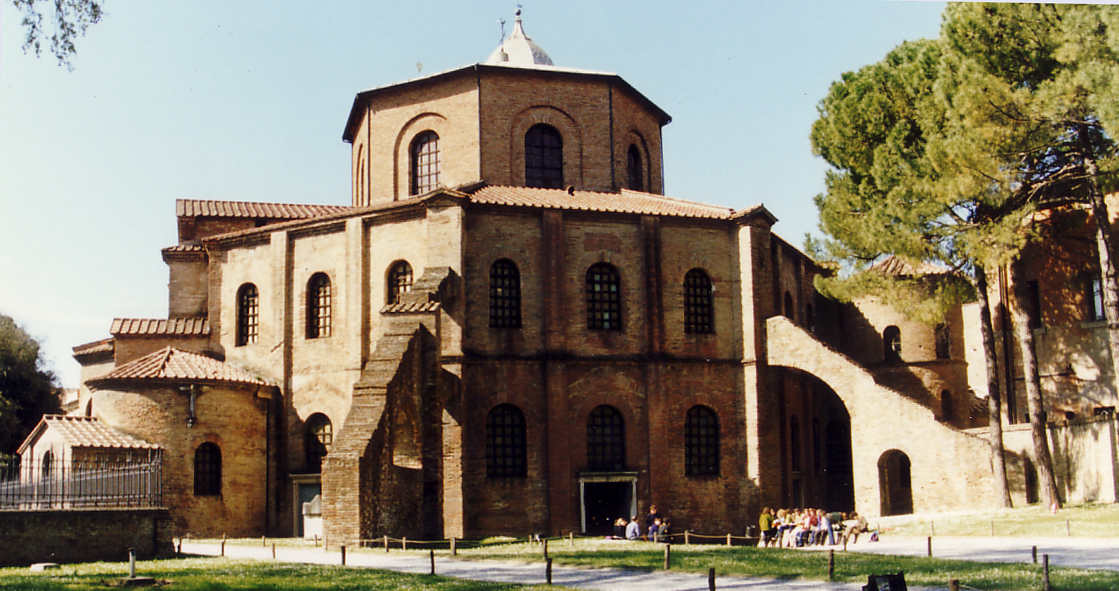 |
It was not till Justinian reconquered Italy, in 553, when Ravenna became his Western capital and Rome was yielded to the Popes, that the new style found its way into the West. The church of S. Vitale, built by that Emperor at Ravenna, is most interesting, mot merely as marking the first appearance of the Byzantine cupola in Italy, but for its own singular beauty and proportion, with which Charlemagne was so delighted, that he adopted it as the model for his celebrated church at Aix-la-Chapelle. It displays almost every Byzantine feature except the cross, - round without and octagonal within, eight lofty arches spring at once from the ground to the base supporting their cupola; the sanctuary is raised by two steps above the octagonal nave, its walls pierced on either side, above and below, by three arches, while the lower part, and indeed the whole of the remaining walls, are covered with mosaics, which also extend into the absis, or tribune. The capitals of the columns are squared blocks, sculptured with basket-work tracery, a characteristic of the style.
Lindsay (1847) I p.65 mentions Santa Fosca:
S. Fosca, on the contrary, has fewer advantages of position [than San Cyriaco in Ancona]. It is a small building, nearly of the same date as S.Cyriaco, but built of the fragments of older edifices. The interior is singularly simple and beautiful, presenting the Greek cross and dome, while externally it is supported on three sides by an open portico, the pillars of which support a slanting wooden roof; they are of all shapes and sizes, some round, some square-shafted, some polygonal, - their capitals, a medley of Corinthian and of square blocks, either absolutely plain or covered with the usual basket-work tracery.
 |
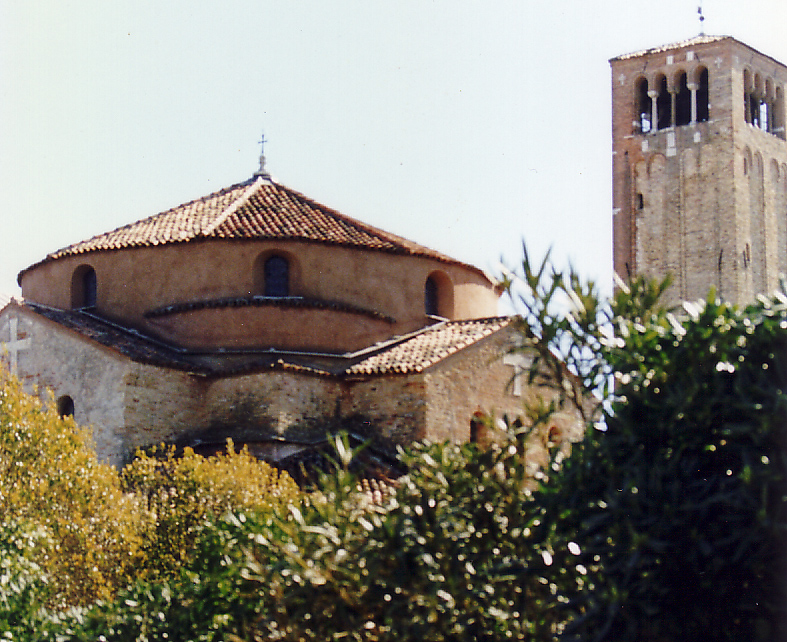 |
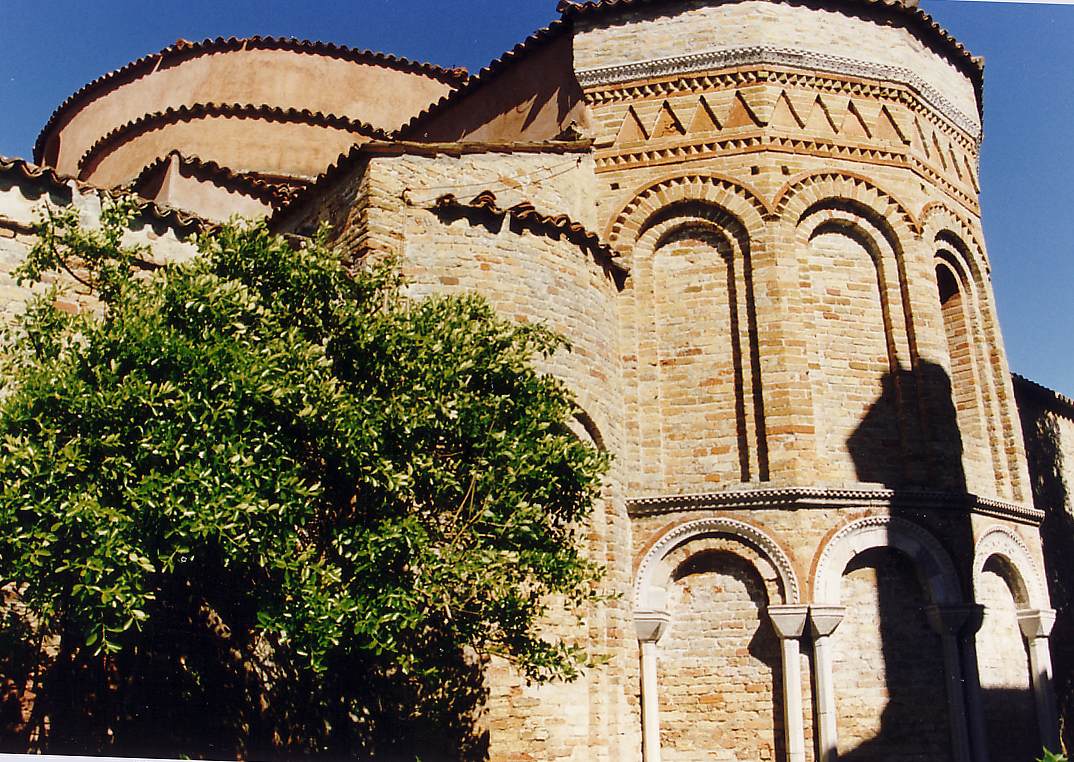 |
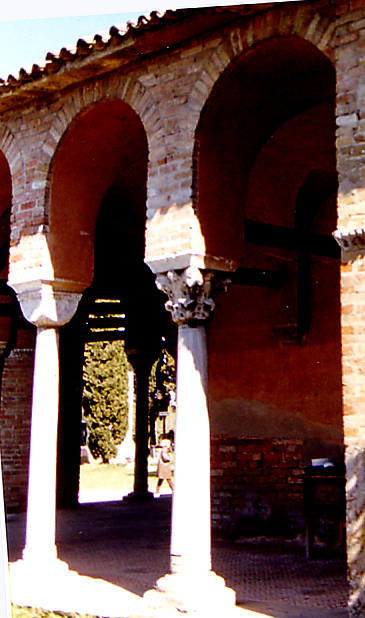 |
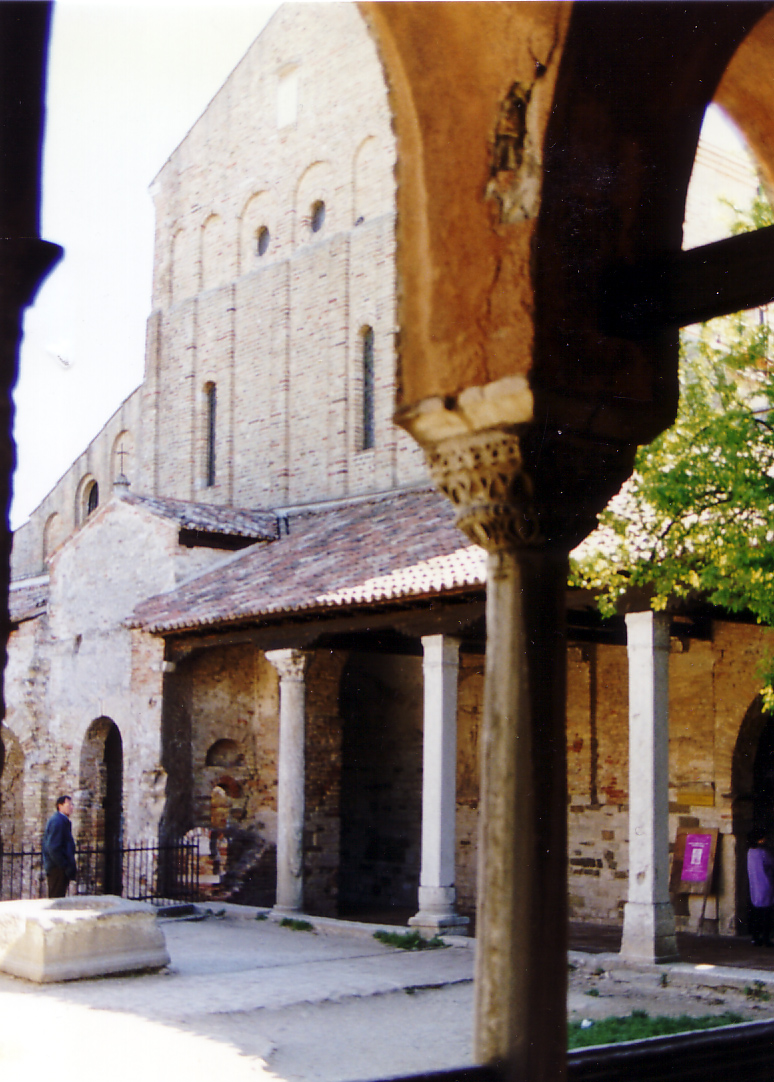 |
 |
 |
 |
[Version 0.05: May 2008]